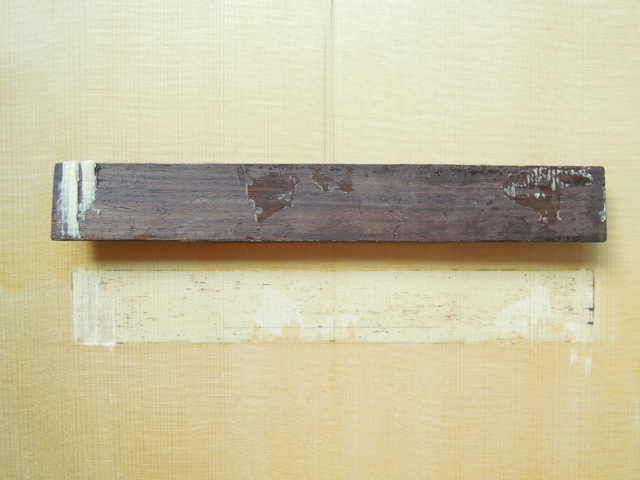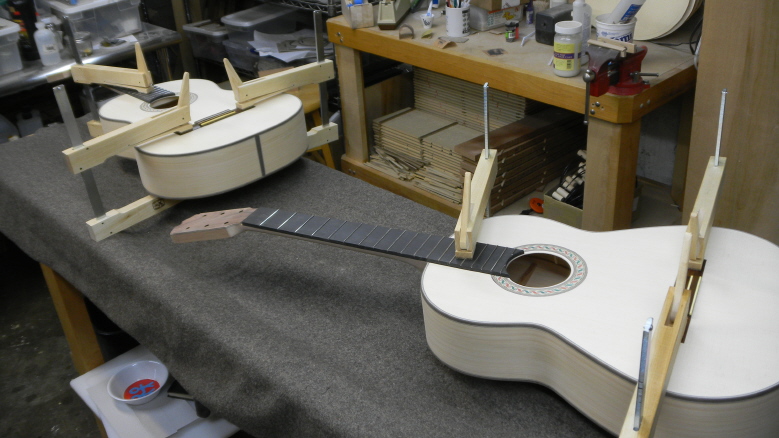|
El Burdo -> Guitar break (Oct. 27 2012 11:32:49)
|
Hello
I played the (unfinished) guitar I made last night at a gig playing Bossa Nova - so lots of chordal plucking rather than rasqueo. The build is shamefully inept and an expensive learning curve but worth it - I'm looking forward to doing the next one, the proper one!).
Then this happened. It wasn't just the string breaking, the bridge detached wholesale from the s/b mid G13/Ab, requiring me to play percussion on the remains until a replacement guitar was located. Needless to say, the band were suitably helpful with 'nice guitar break', 'you pick your time' , 'take it to the bridge' etc...
I'm a bit confused as to the reason for the break as it seemed to have been properly glued along the length; there is some Rosewood attached still, but at the edges, pine has been torn out of the s/b. Are there any (less than) obvious conclusions that I can guard against as I'm now worried that this can happen on any guitar I make. I glued the bridge on, after the body assembly, with Titebond using the go-bar deck method as I don't have long clamps and I'd read that one shouldn't apply too much pressure in any case.
Any help gratefully etc etc.
(I have also really been enjoying the photographs of Anders' #100. It's very instructive and inspiring so thanks from a neophyte. I didn't realise how easy is was to build a side press (if you can afford the blankets), and I like the short plane used for the head. I've done everything with a fore-plane up to now!).
Thanks.

Images are resized automatically to a maximum width of 800px
|
|
|
|


